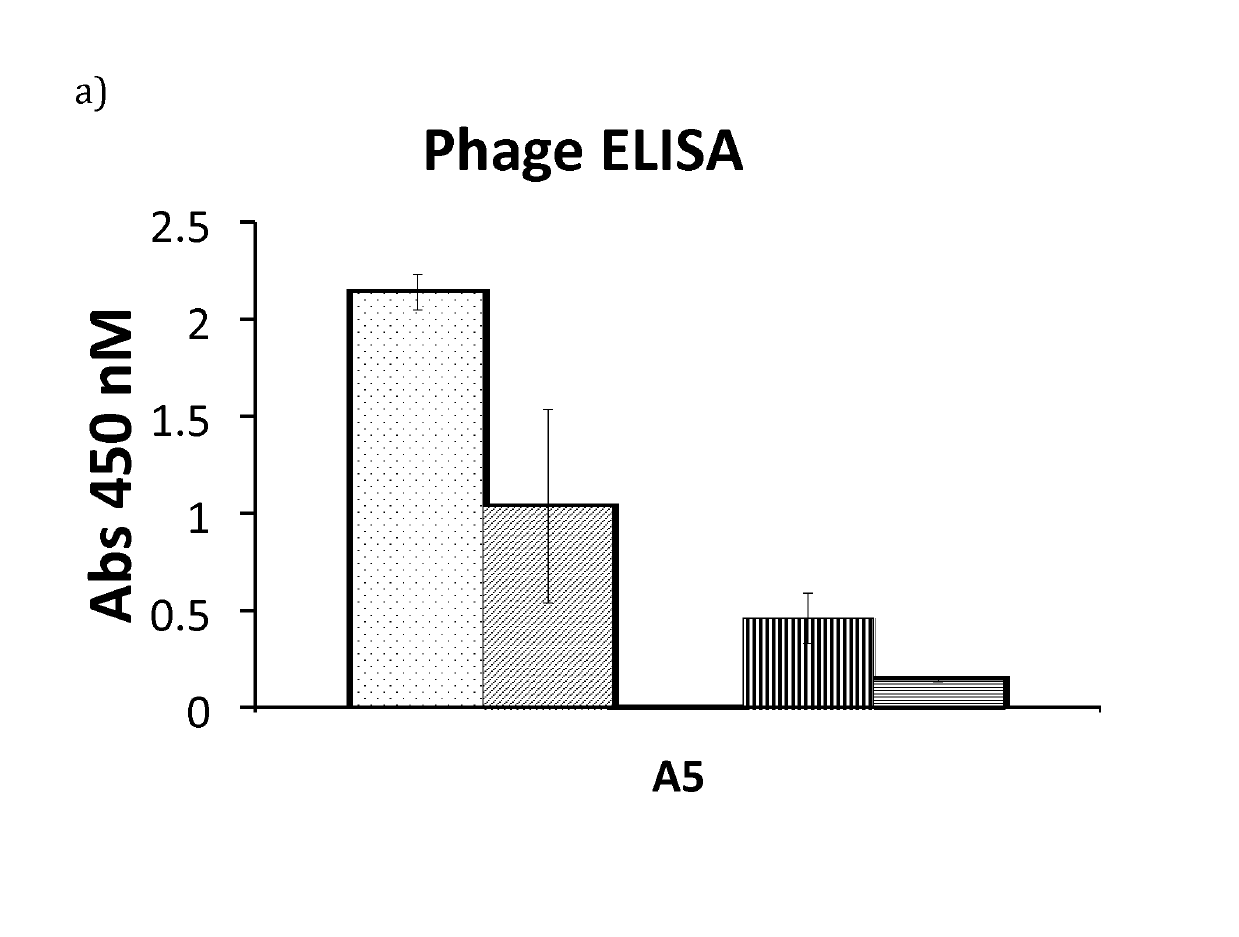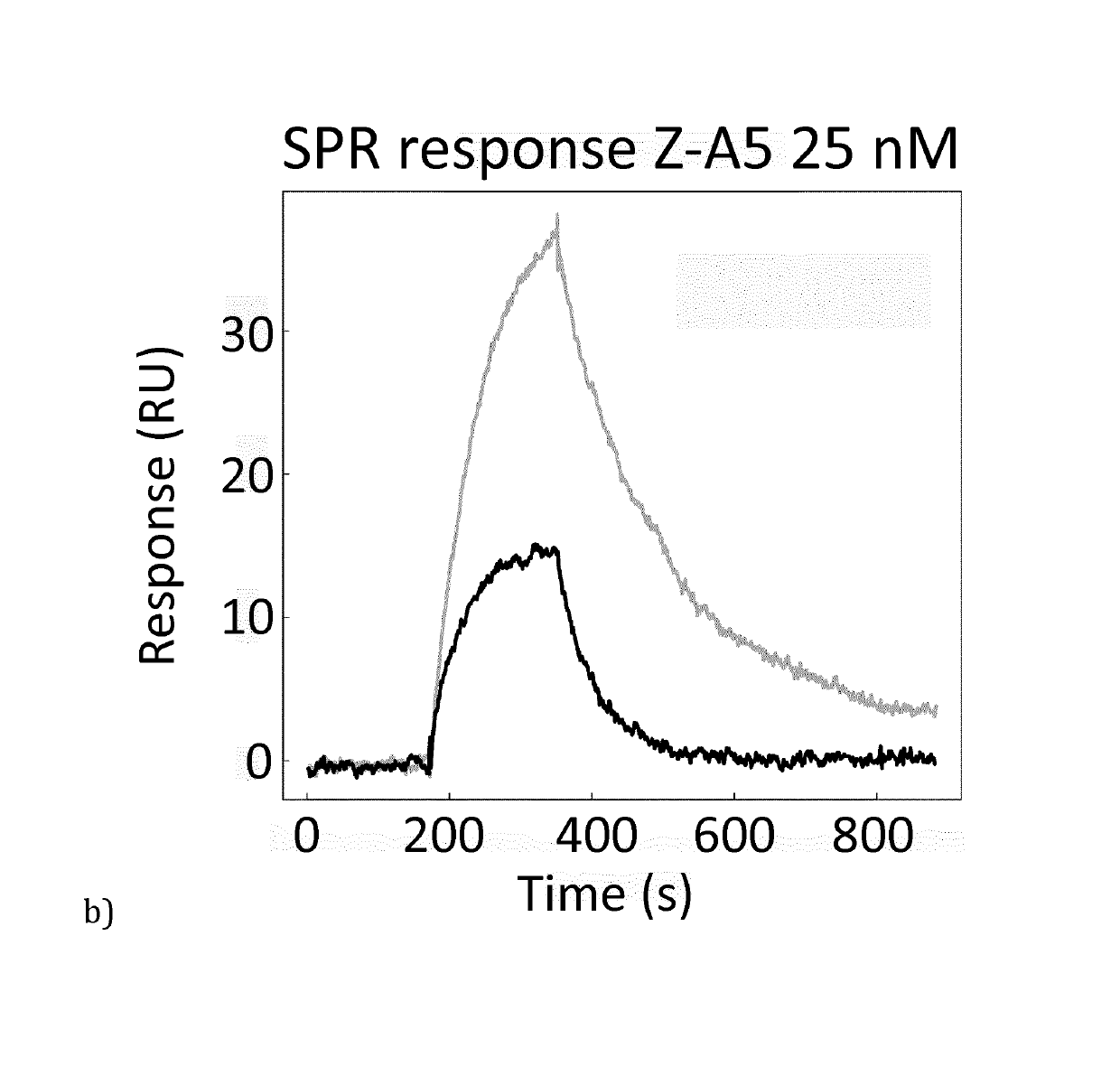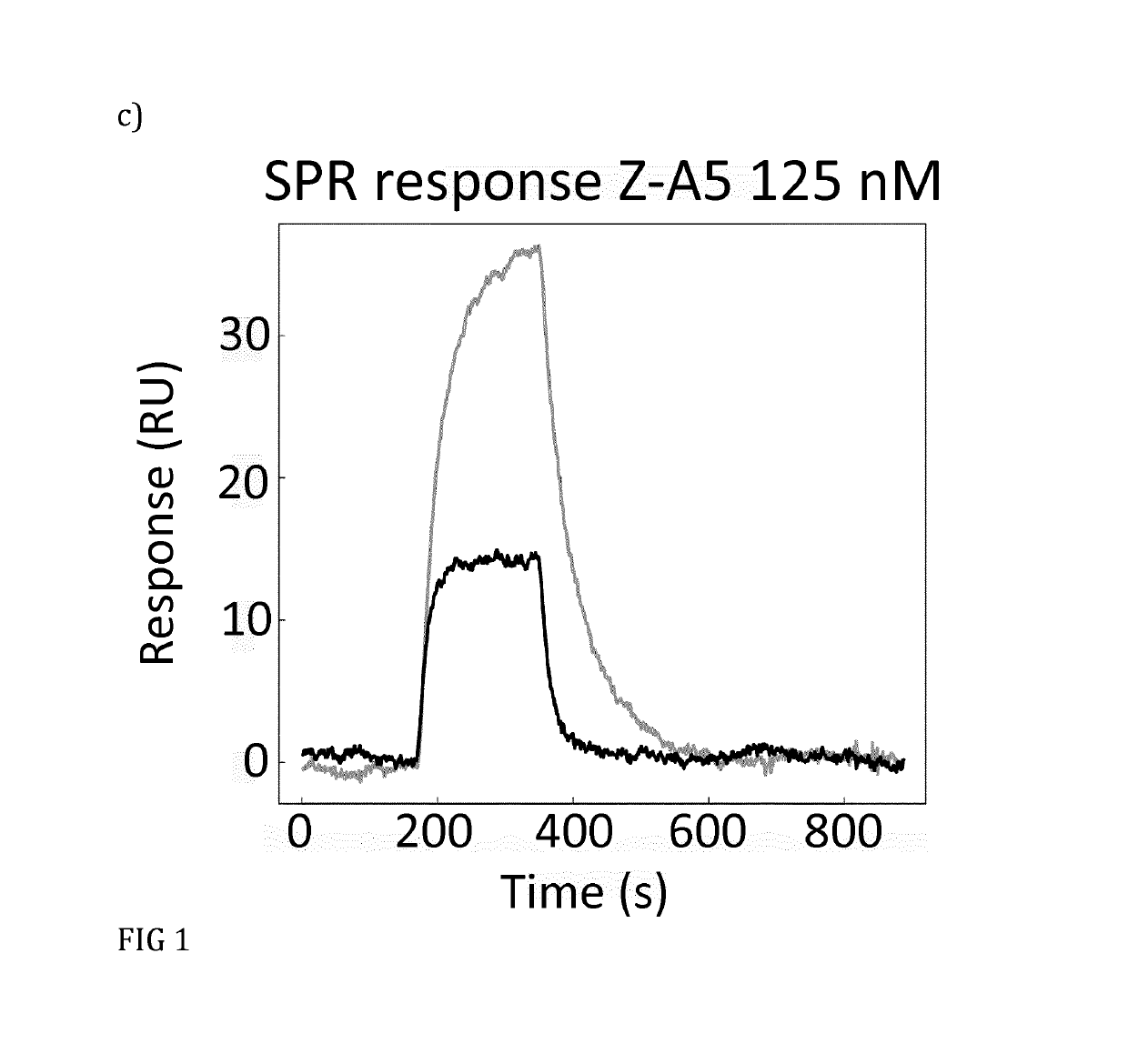Novel Ligand and Use Thereof
a technology of ligands and ligands, applied in the field of protein engineering and purification, can solve the problems of acidic ph (3-4) elution, hamper the development and purification of new antibody based tools, and may be detrimental to the development and purification of antibodies, and achieve the effect of increasing alkali stability
- Summary
- Abstract
- Description
- Claims
- Application Information
AI Technical Summary
Benefits of technology
Problems solved by technology
Method used
Image
Examples
experiment 1
[0090]Based on the results from phage ELISA, SPR and CD, with emphasis on the differences that were detected with and without calcium, it was decided to further investigate Zmat1 (SEQ ID NO 1), Zmat3 (SEQ ID NO 3), Zmat6 (SEQ ID NO 6) and Zmat8 (SEQ ID NO 8) in a purification setup. A fixed amount of protein (100 μg) was loaded on an IgG Sepharose column to investigate whether the protein variants could be eluted using EDTA. Additional factors investigated were the addition of 1 M urea in the elution buffer, elution at elevated temperature (37° C.) and incubation with elution buffer for 30 minutes before final elution. As a control, the EDTA elution was followed by traditional elution at pH 3.2 to collect residual protein from the column. It was concluded that the original Z domain could only be eluted at pH 3.2 while Zmat8 could be eluted in a calcium-dependent manner if the pH of the buffer was lowered to 5. The eluted peaks were analysed by SDS-PAGE. To further characterise the b...
experiment 2
[0094]Genes for a monomer and head to tail multimers (dimer, trimer and tetramer) of Zmat8 (SEQ ID NO 8) including a C-terminal cysteine were amplified and cloned into an expression vector. The proteins have been expressed in E. coli and purified on IgG Sepharose.
[0095]Equimolar amounts of the proteins were immobilised on an iodoacetyl resin for covalent immobilisation of cysteines (SulfoLink™ coupling resin, ThermoFisher). A large excess of polyclonal human IgG was added to the resins in a test purification set up with EDTA elution to test the binding capacity of the columns.
Materials & Methods
Resin Coupling
[0096]Covalent and irreversible immobilization of the proteins to columns was done using SulfoLink® Coupling Resin (Thermo Scientific), activated with iodoacetyl groups, via the C-terminal cysteine. Approximately 70 nmole of each protein variant, corresponding to 0.5 mg Zmat8MonoCys, 1 mg Zmat8DiCys, 1.5 mg Zmat8TriCys and 2 mg Zmat8TetCys, was diluted in coupling buffer (50 mM ...
experiment 3
[0102]Head to tail multimers of Zmat8 with a C-terminal cysteine were coupled to 1 ml agarose based matrix in HiTrap™ columns (GE Healthcare). The variants tested were a trimer and a tetramer. The ligand amount was determined to 4.5 mg / ml for the trimer and 3.2 mg / ml for the tetramer.
[0103]The columns were used for purification on ÄKTA Pure using polyclonal human IgG. Injecting 40 mg of IgG was shown to saturate both columns. The IgG was eluted using 100 mM EDTA at pH 5.5 (FIG. 6). Elution at pH 3.3 was also performed to confirm that no IgG was left on the column. The area of the EDTA elution peaks for the two columns were compared in order to determine the purification capacity for the two variants (table 3). The tetramer could bind 1.8 times more IgG per coupled molecule and 1.3 times more IgG per binding site compared to the trimer, showing that the tetramer has a higher binding capacity than the trimer in a column purification set up.
TABLE 3Coupling degree Binding Area eluted Ig...
PUM
| Property | Measurement | Unit |
|---|---|---|
| pH | aaaaa | aaaaa |
| pH | aaaaa | aaaaa |
| pH | aaaaa | aaaaa |
Abstract
Description
Claims
Application Information
 Login to View More
Login to View More - R&D
- Intellectual Property
- Life Sciences
- Materials
- Tech Scout
- Unparalleled Data Quality
- Higher Quality Content
- 60% Fewer Hallucinations
Browse by: Latest US Patents, China's latest patents, Technical Efficacy Thesaurus, Application Domain, Technology Topic, Popular Technical Reports.
© 2025 PatSnap. All rights reserved.Legal|Privacy policy|Modern Slavery Act Transparency Statement|Sitemap|About US| Contact US: help@patsnap.com



